Creating a visually appealing and well-maintained walkway can dramatically enhance your home's curb appeal. Edging plants are a fantastic way to define your sidewalk while adding color and texture to your landscape.
In this guide, we'll explore the best plants for edging along a sidewalk, considering their growth habits, ease of maintenance, and growing zones.

1. Boxwood (Buxus spp.) – Growing Zones 5-9

The popular evergreen shrub, boxwood, is known for its dense, compact growth and capacity for pruning into various shapes.
With its small, glossy leaves, boxwood creates a neat, formal appearance perfect for edging along sidewalks.

Many varieties are available, ranging in size and hardiness, so you can find the ideal boxwood for your climate and design preferences.
2. Lavender (Lavandula spp.) – Growing Zones 5-9

Lavender is a fragrant, low-maintenance option for sidewalk edging. The silvery foliage and vibrant purple blooms create a stunning contrast against the walkway.

Plant lavender in well-draining soil and full sun to ensure healthy growth. Remember that some lavender varieties can grow quite tall, so select a dwarf or compact variety for a more suitable edging plant.
3. Creeping Thyme (Thymus serpyllum) – Growing Zones 4-9
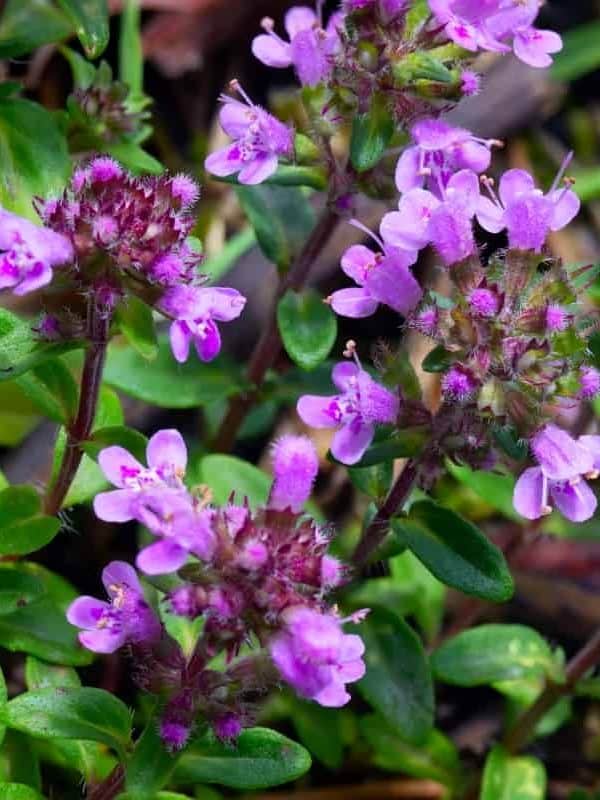
Creeping thyme is a low-growing, perennial herb that forms a dense, aromatic mat of foliage. Its tiny, purple flowers attract pollinators and add a pop of color along your sidewalk.

Creeping thyme is drought-tolerant, making it an excellent choice for low-maintenance gardens. Plant it in well-draining soil and full sun for the best results.
4. Liriope (Liriope muscari) – Growing Zones 6-10
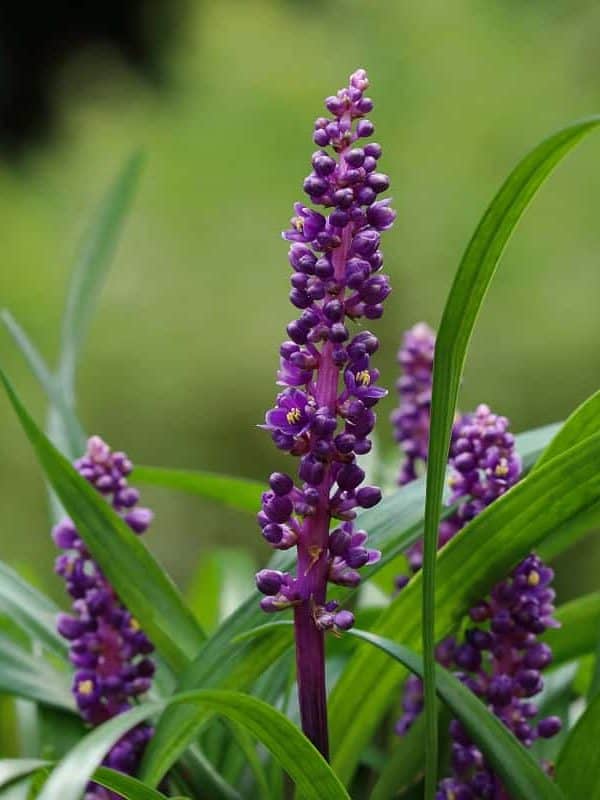
Liriope, also known as lilyturf or monkey grass, is a versatile, clump-forming perennial with grass-like foliage.
Its attractive, arching leaves create a soft, flowing effect along your sidewalk, while its small, purple or white flower spikes add interest in the summer.
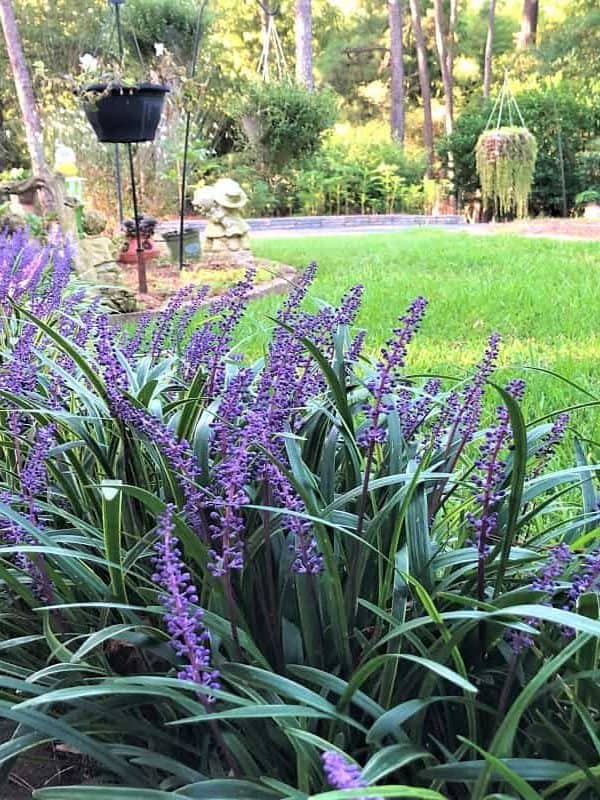
Liriope is adaptable to various light and soil conditions, making it an easy choice for most gardeners.
5. Coral Bells (Heuchera spp.) – Growing Zones 4-9

Coral bells offer striking foliage in shades of green, purple, bronze, and even silver, making them an eye-catching choice for sidewalk edging.

Their low-growing habit and mounding growth form a neat border, while their delicate, bell-shaped flowers add interest in the summer. Plant coral bells in well-draining soil and partial shade for optimal growth.
6. Sweet Alyssum (Lobularia maritima) – Growing Zones 5-9 (annual)

Sweet alyssum is a low-growing annual with a carpet of tiny, fragrant flowers in shades of white, pink, or purple.
Its spreading habit makes it an excellent choice for filling in gaps along your sidewalk and softening the edges.

Plant sweet alyssum in well-draining soil and full sun to partial shade.
7. Daylilies (Hemerocallis spp.) – Growing Zones 3-9

Daylilies are a low-maintenance and attractive option for sidewalk edging. With their grass-like foliage and colorful, trumpet-shaped flowers, daylilies can create a stunning border.

Choose compact or dwarf varieties for a more suitable edging plant. Plant daylilies in well-draining soil and full sun to partial shade.
8. Hostas (Hosta spp.) – Growing Zones 3-9

Hostas are a popular choice for edging plants, especially in shady areas. Their lush, attractive foliage comes in various shades of green, blue, and even variegated patterns, making them a versatile option for sidewalk borders.

Hostas are low-growing and easy to care for, requiring little maintenance beyond removing dead leaves in the spring. Plant hostas in well-draining soil and partial to full shade.
9. Dianthus (Dianthus spp.) – Growing Zones 3-9

Dianthus, also known as pinks or Sweet William, is a low-growing perennial with a mounding habit that's perfect for sidewalk edging.

Its fragrant, fringed flowers come in shades of pink, red, and white, adding a burst of color to your walkway.
Plant dianthus in well-draining soil and full sun to partial shade for the best results.
10. Geraniums (Pelargonium spp.) – Growing Zones 9-11 (annuals in colder zones)

Geraniums are a classic choice for edging plants, with their vibrant flowers and attractive, rounded foliage. They're available in many colors and sizes, making them a versatile option for any garden.
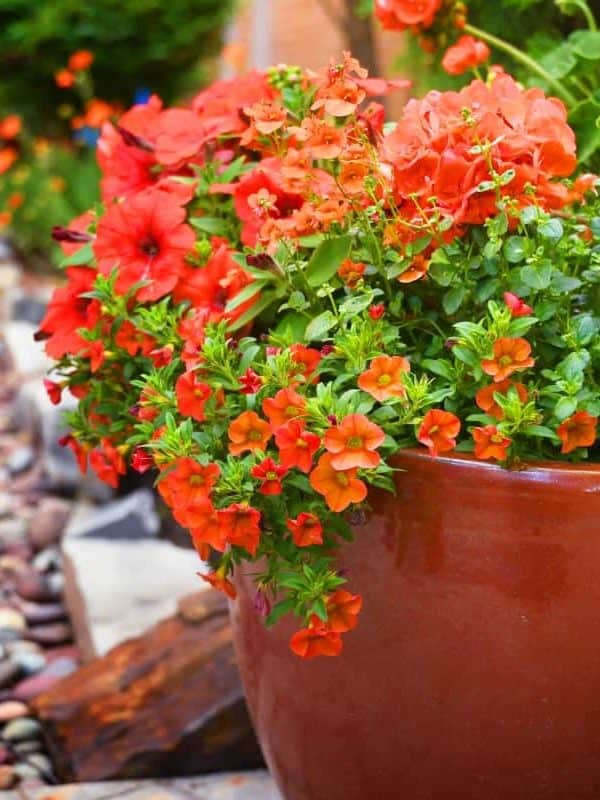
Plant geraniums in well-draining soil and full sun, and deadhead spent flowers to encourage continuous blooming throughout the season.
11. Japanese Sedge (Carex morrowii) – Growing Zones 5-9

Japanese sedge is a grass-like perennial that creates a dense, mounding border along your sidewalk.

Its arching, variegated leaves provide visual interest, while its low-growing habit keeps it from encroaching on your walkway. Plant Japanese sedge in well-draining soil and partial to full shade.
12. Vinca (Catharanthus roseus) – Growing Zones 10-11 (annuals in colder zones)

Vinca, also known as periwinkle or Madagascar periwinkle, is a low-growing, spreading annual with glossy green leaves and colorful, pinwheel-shaped flowers.

Its drought tolerance and ability to thrive in various soil types make it an excellent choice for low-maintenance gardens. Plant vinca in well-draining soil and full sun to partial shade.
13. Lamb's Ear (Stachys byzantina) – Growing Zones 4-8
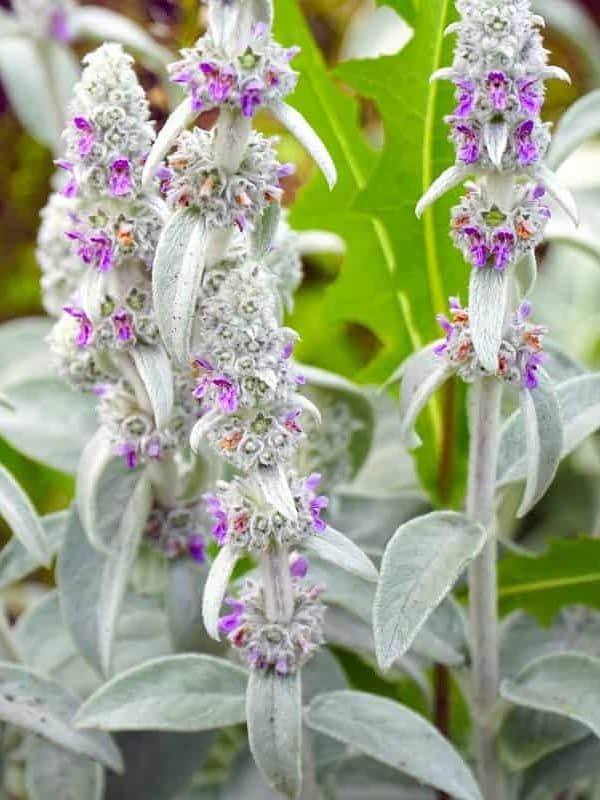
Lamb's ear is a unique, low-growing perennial known for its soft, silvery foliage that creates a stunning contrast against your sidewalk.

Its fuzzy leaves are visually appealing and drought-tolerant, making it a great choice for xeriscaping. Plant lamb's ear in well-draining soil and full sun for the best results.
Are You Feeling Edgy?

Choosing the right edging plants for your sidewalk can create a beautiful, well-defined border that enhances your home's curb appeal.
When selecting plants, consider their growth habit, ease of maintenance, and suitability for your specific growing zone.
Incorporate a mix of foliage textures, colors, and bloom times to create a dynamic and visually appealing walkway that's sure to impress.
Enjoy more! Find many fabulous articles on GardenTabs.com.
Can You Use An Edger Along A Fence [Without Causing Damage]?
8 Awesome No-Dig Garden Edging Ideas You Should Check Out
Can You Mow Over Lawn Edging? [Mow Strips 101]
Best Garden Edging Shears [10 Options Every Gardener Should Know]
